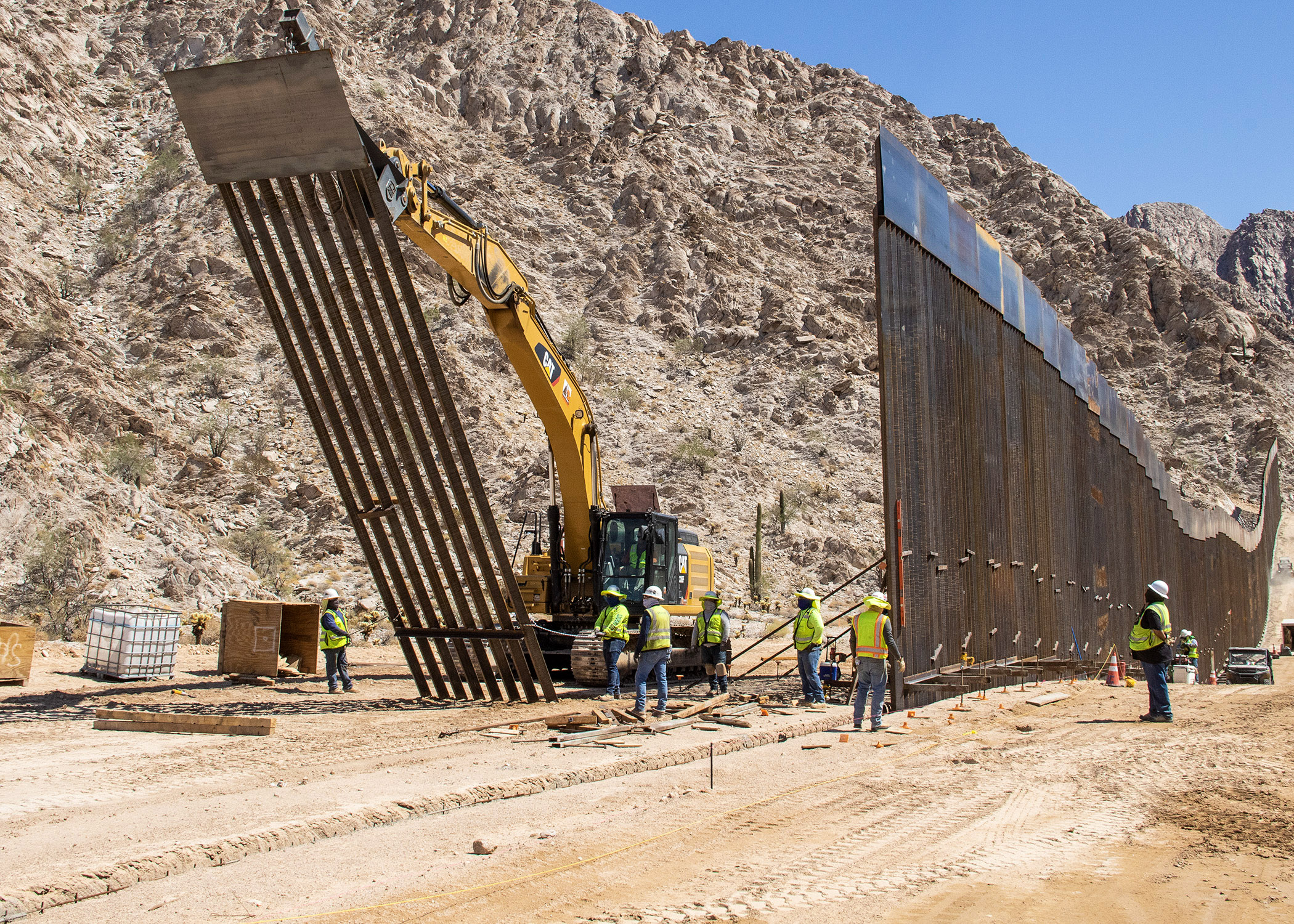Indianz.Com > News > Cronkite News: Supreme Court to hear Trump border wall case

Supreme Court to hear Trump plan to use Pentagon funds for border wall
Tuesday, October 20, 2020
Cronkite News
WASHINGTON – The Supreme Court said Monday it will consider whether the Trump administration can use an emergency declaration to divert $2.5 billion on Defense Department funds to construct the southern border wall.
Two lower courts have rejected the administration’s argument, agreeing with opponents who argue that the emergency declaration was meant to bypass Congress and is unconstitutional, rulings the administration is challenging.
Both sides welcomed Monday’s announcement that the high court would hear
the case.
“This gives us a chance to go to the highest court of the land and tell them why transferring this money was unlawful, as the other courts have said, but also to talk about the reasons why a border wall is so harmful for our communities,” said Vicki Gaubeca, director of the Southern Border Communities Coalition, one of two groups that sued to block the wall funding
But Rep. Paul Gosar, R-Prescott, defended the funding shift, saying in a statement Monday that “protecting the border and our national sovereignty is a core and fundamental purpose of the military.” “The allocation of Defense money to defend the national borders is 100% constitutional and consistent with congressional intent,” Gosar said. “The American people need and deserve a secure border. They’re getting one from this administration. No date has been set for a hearing on the case, but the court’s calendar is already full through the end of this year. But it will not be the first time the high court has considered the issue: The Supreme Court previously blocked the lower courts’ orders, allowing wall construction to proceed while the case worked its way through the courts. The dispute over border wall funding began in late 2018, when Congress refused to give Trump billions for border wall construction and he refused to sign the budget, a standoff that led to a 45-day partial government shutdown. The shutdown ended in February 2019, when Congress agreed to allocate $1.375 billion for limited border wall projects. But immediately after signing that budget, Trump declared a national emergency at the border that he said authorized the transfer of up to $8.1 billion from other government sources to fund border wall projects.TAKING IT TO THE COURTS (AGAIN)! Today, the Supreme Court announced it will hear arguments challenging Trump’s use of military spending on his vanity wall. The lawsuit was brought by the @ACLU on behalf of our partners @SierraClub and us, SBCC. https://t.co/mbRcvzPTnx
— SBCC (@SBCCoalition) October 19, 2020
Note: This story originally appeared on Cronkite News. It is published via a Creative Commons license. Cronkite News is produced by the Walter Cronkite School of Journalism and Mass Communication at Arizona State University.
Search
Filed Under
Tags
More Headlines
AUDIO: H.R.2916, a bill to ratify the Akwesasne Mohawk Land Claim
AUDIO: H.R.2389, the Quinault Indian Nation Land Transfer Act
AUDIO: H.R.2388, the Lower Elwha Klallam Tribe Project Lands Restoration Act
AUDIO: H.R.2302, the Shingle Springs Band of Miwok Indians Land Transfer Act
Native America Calling: Tribes fight for solutions to dwindling clean water sources
Native America Calling: Mental health experts point to personal connections to maintain winter mental health
Native America Calling: Tribes ponder blood quantum alternative
Defense bill snubs Indian Country in favor of Lumbee federal recognition
NAFOA: 5 Things You Need to Know this Week (December 8, 2025)
Chuck Hoskin: Cherokee Nation benefits from extension of health care credits
Native America Calling: Tribal museums reflect on tumultuous year, chart their next steps
Press Release: National Museum of the American Indian hosts Native art market
AUDIO: Sea Lion Predation in the Pacific Northwest
Native America Calling: Tribal colleges see an uncertain federal funding road ahead
Native America Calling: Short films taking on big stories
More Headlines
AUDIO: H.R.2389, the Quinault Indian Nation Land Transfer Act
AUDIO: H.R.2388, the Lower Elwha Klallam Tribe Project Lands Restoration Act
AUDIO: H.R.2302, the Shingle Springs Band of Miwok Indians Land Transfer Act
Native America Calling: Tribes fight for solutions to dwindling clean water sources
Native America Calling: Mental health experts point to personal connections to maintain winter mental health
Native America Calling: Tribes ponder blood quantum alternative
Defense bill snubs Indian Country in favor of Lumbee federal recognition
NAFOA: 5 Things You Need to Know this Week (December 8, 2025)
Chuck Hoskin: Cherokee Nation benefits from extension of health care credits
Native America Calling: Tribal museums reflect on tumultuous year, chart their next steps
Press Release: National Museum of the American Indian hosts Native art market
AUDIO: Sea Lion Predation in the Pacific Northwest
Native America Calling: Tribal colleges see an uncertain federal funding road ahead
Native America Calling: Short films taking on big stories
More Headlines